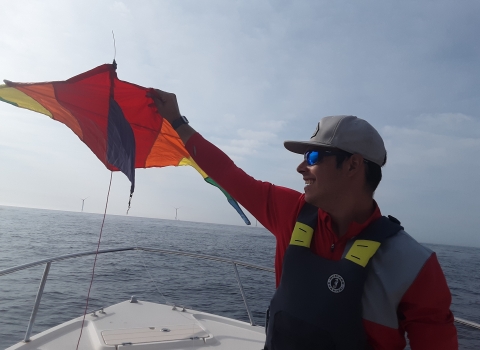Since 2022, Andy Schell, Montana Fire Zone Assistant Fire Management Officer for the U.S. Fish and Wildlife Service, has helped lead wildland fire management training in Madagascar through the U.S. Forest Service’s International Programs and the United States Agency for International Development (USAID). Initially he provided his expertise virtually.
In March 2024 Schell traveled to Madagascar to provide hands-on, train-the-trainer instruction for regional and national Malagasy government and Non-Governmental Organization (NGO) personnel. The training is part of an effort to improve fire management in and around Madagascan national parks by engaging area communities. By training trainers, participants create community fire brigades, helping local communities become more resilient to wildfire, while also protecting ecosystems in and near national parks.
Situated in the Indian Ocean off the southeast coast of Africa, Madagascar is notable for its high number of endemic species and historic and cultural influences from Africa, the Middle East, and Asia. Wildfire is a growing problem that threatens the island’s biodiversity. Climate change is causing wildfires to grow in size and number and devastation. Common causes of wildfire range from natural ignition, like lightning, to fires set intentionally for agriculture and charcoal production. More than 4 million hectares (9.8 million acres) of land are burned by wildfires each year. These wildfires threaten lives, livelihoods and ecosystems.
In the United States, public land agencies use prescribed fire safely and effectively to consume excess fuel, such as dead and downed trees, to reduce dangerous and intense wildfires. But current national policy in Madagascar prohibits prescribed burning on protected areas, such as national parks. However, approval can be obtained for prescribed burns on unprotected lands. For several years, Madagascar has worked with USAID to develop a relationship with U.S. wildland fire agencies to build the foundation for in-country wildland fire expertise and policy.
During his two weeks in Madagascar, Schell taught students valuable wildland fire skills to take back to their remote home villages, districts, or states. He also gave them the knowledge to educate others of the need to create policy that better protects communities and the country’s rich ecosystem.
The first week of training consisted of Basic Wildland Firefighter training — the course that all federal wildland firefighters in the United States are required to attend. Much of the week was spent in a classroom. The last day was spent in the field to allow students to work as a crew digging a fireline with hand tools, taking weather measurements, and learning to use a drip torch.
“Finding the right place for the field day was a challenge,” said Schell. “However, working through their local land management agencies, we were able to pick the perfect location where there was little risk of affecting private land or nearby villages.”
“Having never been Madagascar before, I didn’t know exactly how the fuels would burn,” continued Schell. “We found a wide dirt road that had a ‘mohawk’ of vegetation in the middle, and we utilized that strip of vegetation to implement the drip torch training. We had one student at a time light the vegetation on fire while another student followed close behind, flapping out the burn with a firefighter tool designed to smother flames.”
Communication between the cadre and students wasn’t a problem, even though Schell speaks English, and most Malagasy people speak Malagasy and French. Earphones worn by students provided simultaneous translation during the training.
“Having real-time translation services was imperative to the effectiveness of this class,” said Schell, “especially when it came to the field day where we were putting actual fire on the ground.”
The second week of training focused on burn plans. A burn plan is a written prescription for a prescribed fire including critical elements such as the weather conditions under which the burn will be conducted, the number of personnel and duties of each, and the type, amount and placement of equipment needed to safely conduct the burn.
This portion of the training allowed many of the country’s land managers to meet in the same room and discuss wildland fire operations and the multitude of considerations, research, and training required for wildland fire management. The week was used to brainstorm a path forward for the country, discuss whether prescribed fire is the right tool for land management, and introduce how burn plans incorporate the concerns, research, planning, logistics, and training required to complete a successful and professional prescribed fire. Participants created sample burn plans for areas within the country that they wish to treat with prescribed fire.
“Overall, this opportunity was incredible,” said Schell. “To be able to work with partners and go across the world and learn from each other was such a valuable experience. I realized that no matter where you are, fire is fire, and we all react to it in the same way. Whether our reaction is good or bad, whether you have the advantages of technology or no technology, whether you have an established fire program or not, the goal is always the same: to protect people and protect the land.”







